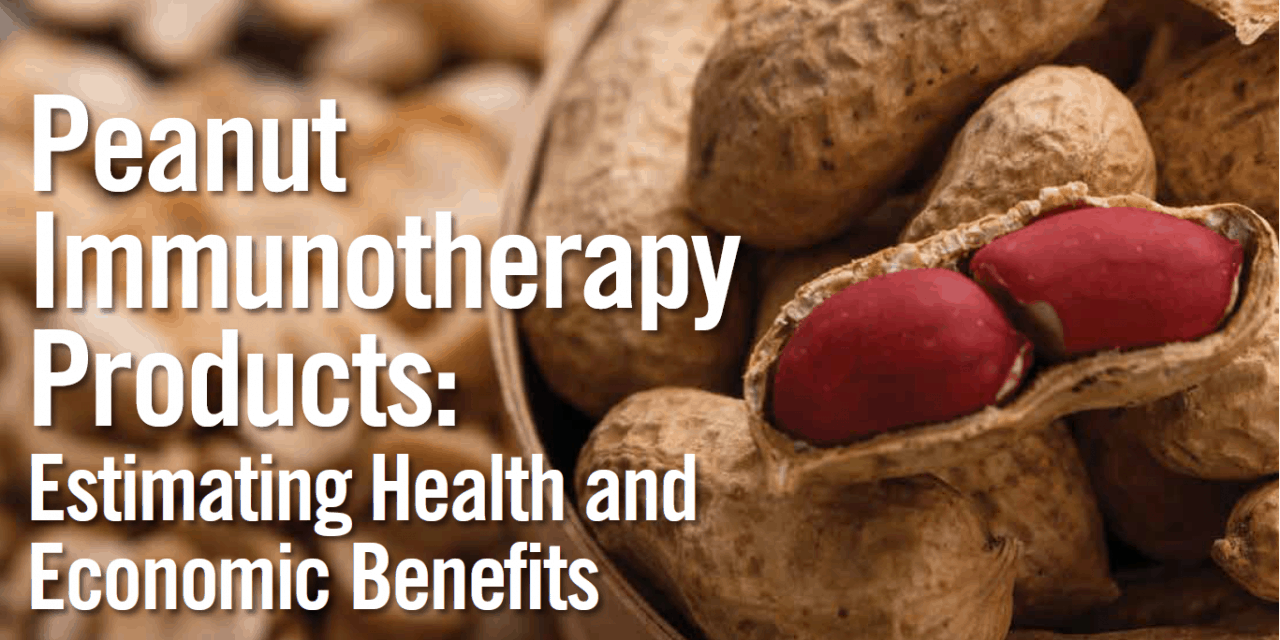Different types of peanut immunotherapy products are on the horizon, but a study suggests that the cost-effectiveness of these therapies will be heavily influenced by several factors.
In the coming years, the FDA is expected to approve oral and epicutaneous forms of immunotherapy for peanut allergy. Two products that appear especially close to FDA approval are a commercial peanut oral immunotherapy (POIT) treatment (AR101, Aimmune Therapeutics) and epicutaneous peanut immunotherapy (EPIT) patch (Viaskin peanut, DBV Technologies). “Although these products will not cure peanut allergies, they may play a role in protecting patients if they consume a small amount of a peanut,” explains Marcus Shaker, MD, MSc. “These products may increase the amount of peanut that can be ingested before allergic reactions occur and may lessen the severity of these reactions.”
While peanut immunotherapies are promising, patients treated with these products will still need to strictly avoid peanuts and carry emergency medications. It is not entirely clear how these therapies will ultimately be used to treat peanut allergy. “The POIT and EPIT products both have risks of adverse events, including anaphylaxis relating to the treatment itself, but the degree to which patients may accept this trade-off is unknown,” says Dr. Shaker.
Seeking a Better Understanding
For a study published in JAMA Network Open, Dr. Shaker and Matthew Greenhawt, MD, MBA, MSc, evaluated critical inputs associated with the cost-effectiveness of EPIT and POIT from a societal perspective. The authors performed Markov modeling with microsimulation and a cost-effectiveness analysis to better understand the potential health benefits and economic outcomes of these commercial food allergy products. The base-case costs included a caregiver-reported willingness to pay of $3,839 annually for safe and effective food allergy treatment. The study population was examined for rates of therapy-associated adverse reactions and quality-of-life improvements, specifically looking at quality-adjusted life-years (QALYs), anaphylaxis, therapy-associated anaphylaxis, and fatalities.
In a base-case analysis of patients without sustained unresponsiveness to peanut, the EPIT strategy cost less than POIT (Table). EPIT was also associated with fewer total episodes of anaphylaxis and fewer episodes of therapy-associated anaphylaxis than POIT, but it had lower QALY accumulation. “The incremental cost-effectiveness ratio was $216,061 for EPIT and $255,431 for POIT,” Dr. Shaker says. “Importantly, our simulated analysis demonstrated that both EPIT and POIT may be cost-effective options. Under base-case assumptions, the annual costs of each therapy could not exceed $1,568 for EPIT and $1,235 for POIT.”
If high rates of sustained unresponsiveness to peanut can be achieved in longer-term models, Dr. Shaker says EPIT and POIT could produce savings in terms of both cost and QALY. The 3 crucial levers affecting the cost-effectiveness and value of each peanut allergy therapy are 1) health state utility improvement, 2) anaphylaxis risk reduction, and 3) the likelihood of achieving sustained unresponsiveness, at which point therapy could be discontinued.
More to Come
“Evidence demonstrating that either peanut immunotherapy produces durable and lasting sustained unresponsiveness may increase their potential value over the base model,” says Dr. Shaker. “Our study predates the approval of the EPIT and POIT products, so it remains to be seen how much these products will truly cost. That said, the impact of these therapies on quality of life must be considered. Quality-of life implications depend on many factors, including the level of protection from allergic reactions, anaphylaxis, and fatalities as well as perceptions on reducing anxiety about the potential consequences of peanut allergy. Patients and families may value treatments that decrease risks of accidental reactions and reduce consequences of such exposures.”
By increasing understanding of factors that matter most to patients, clinicians can ensure that peanut immunotherapy products are used as appropriately as possible as soon as they are approved and launched. “When making treatment decisions, the key is to determine which patients will benefit most from peanut immunotherapies,” says Dr. Shaker. “The hope is this process will become more efficient as we gain a better understanding of the degree of health state utility improvement that is associated with these therapies. We also look forward to longer-term commercial data to better inform health and economic analyses.”



 PWeekly
PWeekly